We’re thrilled to share the latest project from the International Wood Culture Society! “Tales of Dreamers” is all about sustainability initiatives in Black Rock City – both from Burning Man Project and from a variety of Black Rock City theme camps, artists, and more. It tells the story of how sustainability projects are coming to life and highlights some of the technology being used to make it happen. As we set our sights on Black Rock City 2023, we hope this beautiful film inspires Burners around the world to imagine how we can continue to create the greenest event possible, together. For more on the topic of sustainability and Burning Man, check out our sustainability webpage and watch the latest sustainability report update.
Enjoy this piece from the film’s executive producer and multi-year Burner, Mona Wu.
“Tales of Dreamers”: A Journey of Transformation and Sustainability
By Mona Wu
Welcome to the story of “Tales of Dreamers,” a unique cinematic exploration of the annual Burning Man event, where the unique blend of dreams, creativity, and sustainable living intertwine.
After the pandemic’s imposed hiatus, we found ourselves in search of a story — a narrative still evolving, one offering comfort and brimming with hope. Burning Man is often tied to a wild variety of notions, but due to its transient nature, sustainability is not the first connection many people make. Upon embarking on our sixth film, a question arose: “Is this event truly sustainable, and does it justify its existence in our world for the long run?” Driven by the sustainability theme, this question resounds throughout our documentary, “Tales of Dreamers.”
The film crew set off for our longest journey in Black Rock City, a full 14-day immersion, to trace the budding commitment of both the Burning Man organization and Black Rock City participants towards sustainability. We explore sustainable practices adopted by participants and event organizers, showcasing how small steps can contribute to a larger movement of environmental stewardship. You will see artists who prioritize the use of reclaimed wood as their primary resource, alongside international artists who locally source materials to minimize their carbon footprint. You’ll also learn about theme camps transitioning to solar power in place of generators, and Burners’ passion for constructing their infrastructure purely with wooden joinery.
Of course, the journey wasn’t without its challenges. Much like many of us returning after a long break, we felt a bit rusty. We battled dust storms and heat, experienced an anticipated art burn fizzling out, and found that some panel discussions fell short of our expectations. Yet, we were heartened by a number of dedicated Burners who, in the face of these obstacles, walk steadily on the path towards a more sustainable Burn. While our film does not seek to provide a definitive answer, we aim to spark dialogue and raise awareness about sustainability within the context of Burning Man.
In our documentary, “Tales of Dreamers,” I warmly invite every one of you to join us on an adventurous expedition. Together, we will unveil the secrets of a more sustainable Burn. So buckle up, and get ready to be thrilled, inspired and enlightened on this exciting journey!
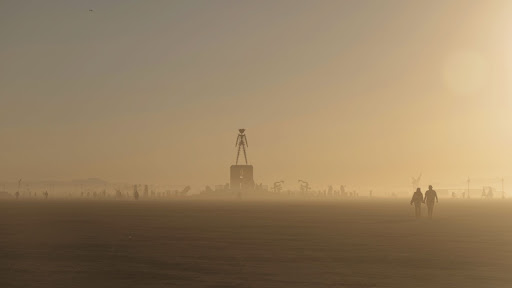
All images courtesy of the artist, Mona Wu

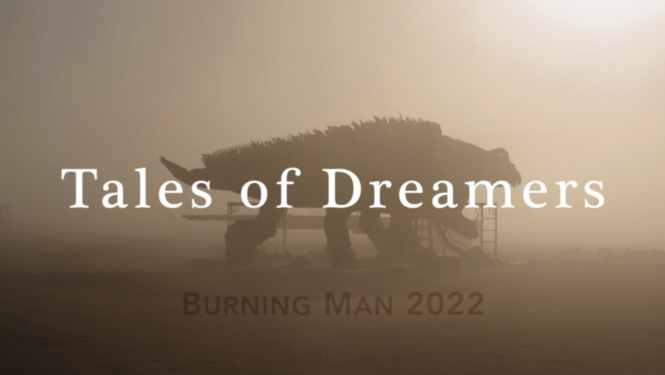
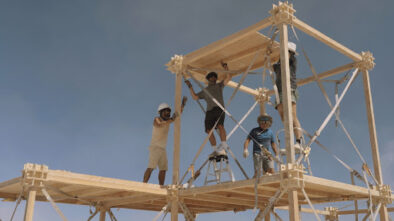
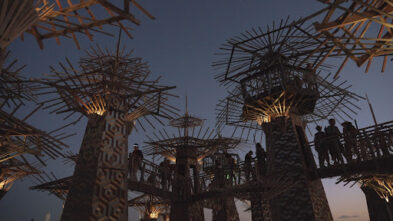

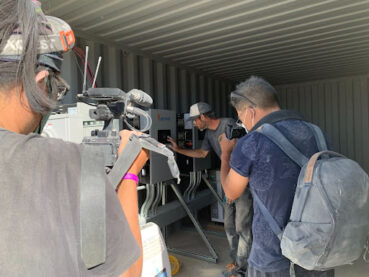
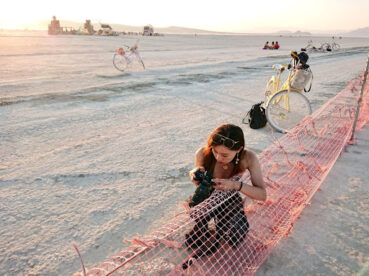
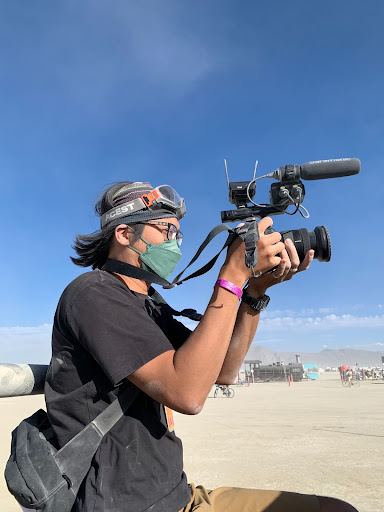
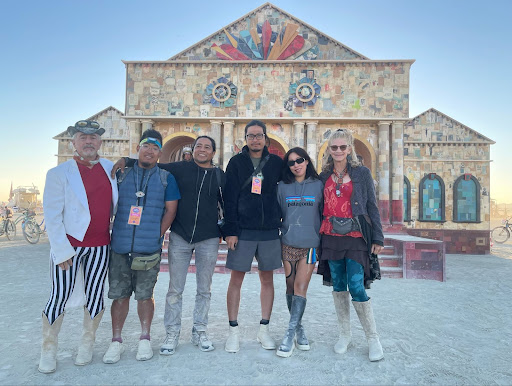
Well made documentary. The Alternative Energy Zone Village (AEZ) has been generator free for 23 years. Our village is on average 450 people in ~80 camps all solar and wind powered. We have been conducting tours of the power systems for over two decades showing burners how they can get off fossil fuel generators. The AEZ isn’t some hard scrable existence either. We live quite comfortably. Let us show you how! We will be at 4:00 and E this year. Come by and take a tour at 11:00 am and see how camps small and large have been using solar and wind to run just about anything. While your at it, tune in to KAEZ 96.3 FM solar powered radio. See you in the dust!
Report comment
Cleu Camp was always on the edge of the city. We never allowed generators on the walk-in area side of the street. How did we ban them? We would put two megaphones together to generate the most excruciating aural experience until the offending generator was moved away or shut off. We chose to live without air conditioning, just using the ancient desert tools of shade, wind, and mist to stay cool. We used evaporative cooling for our grey water. We had a small amount of solar for charging a few things. That’s it! I heard that there is a scientist measuring BRC’s carbon emissions this year, and that in the past, the actual CO2 was that of a very polluted city. We can do so much better. Come on, let’s get a clue!
Report comment
My footprint in BRC goes beyond my camp. I am responsible for the all of the carbon emissions. 200,000,000 pounds of co2 released to enhance my participation.
Carbon emissions at burning man are 4-5 times higher than “default life” averages. 100,000 tons of carbon from 70,000 people is 1.42 tons per person per week. The average in the USA is 0.3 tons per week
Maybe we should move away from carbon intensive entertainment. Do we need to burn hundreds of thousands of pounds of propane just to make excessive fireballs? Do we need so many fireworks that make the burn feel more like a major league baseball game than counter culture.
How do we move past our urge to rationalize our pollution and instead address our problem in a rational way?
There are a lot of small changes that would have a huge impact on the embarrassing carbon emissions from BRC.
Playagia
Report comment
Comments are closed.